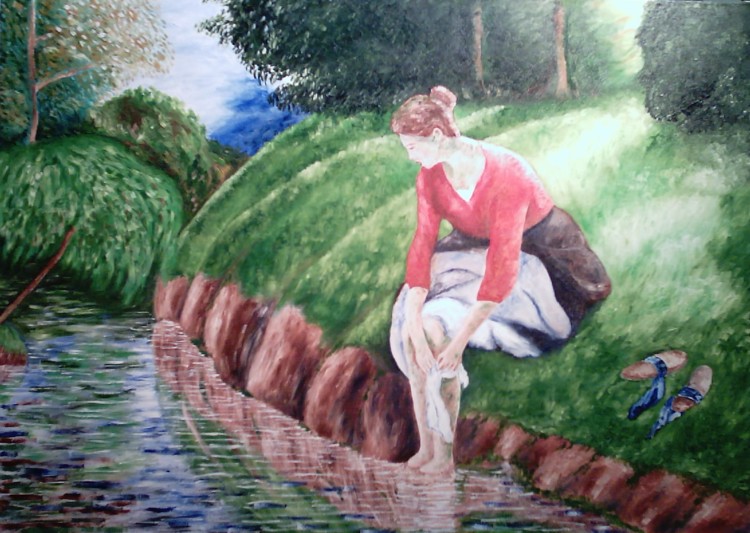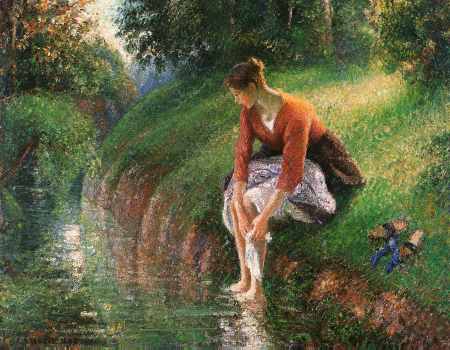
| All material on this site is Copyright by Dean Gardiner. No material from this site may be used in any form without express permission of the copyright owner. |
Woman Bathing
Here is my study of this work.

And here is the original.

This work toured Australia in the Sara Lee collection. I really think Camille Pissarro is underrated in the grand scheme of impressionist art. Pissarro was there at the start and was there at the end, he was associated with all of the major personalities of the time including Corot, Cezanne, Van Gough, Gauguin, Monet, Renoir, Cassat and Suerat. It is generally held that Pissarro was not the equal of his best student, Cezanne, or of Monet or even Renoir. But Pissarro was a very great thinker, perhaps the greatest. He absolutely recognized that art is the crystallization of thought rather than the simple display of technique.
Sometimes Pissarro's questionable composition defies easy analysis, and his ongoing experiments in different techniques does not lend his paintings the instant recognition of say a Monet or a Cezanne. The sad fact is that we may never appreciate his entire oeuvre because his house was ransacked during the Franco Prussian war and hundreds of his earlier works were destroyed. What remains is still a vast collection of magnificent work.
What drew me to this painting was the texture and the light. For a while Pissarro was heavily influenced by the young Georges Seurat and his paintings during this period consisted of a mass of tiny brushstrokes of pure color. It was not quite pointilism in the Seurat technique sense but a chromatically similar approach. This painting still shows Seurat's influence although Pissarro has returned to his more natural style. The result is one of Pissarro's best works from his later period.
When you look at this painting up close the canvas is a sea of texture, almost like the ground was painted with a large coarse roller giving a wonderful stipple effect. My study was a personal lesson in texture, which I had so far avoided in favor of a layering washes. This was the first time I had an excuse to use a palette knife!
The other area in which Pissarro succeeded was in tying the images together and producing a natural balance between the figure, the light and the scenery. Take for example the elongated arms of the woman. In Pissarro's original the arms do not stand out, and like some of mannerist artist Parmigiano's works, the elongation of the limbs heightens a sense of suppleness and litheness to the figure. In my study the figure just looks distorted. Some may argue simply that it was poor composition on Pissarro's part rather than any predefined plan. The preparatory sketches do indicate that Pissarro knew exactly what he was doing, but to me it simply does not matter. The real genius lies in the way that the tying together of the color that gives a naturalistic effect.